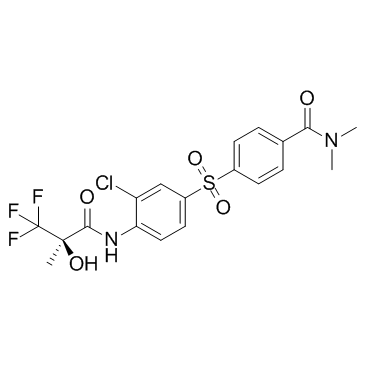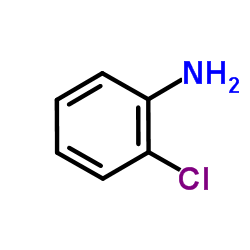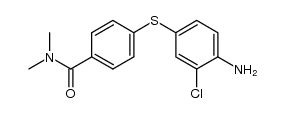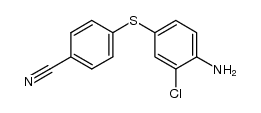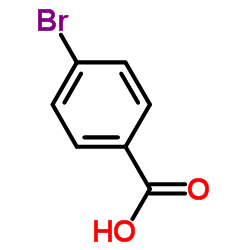252017-04-2
| Name | (2,4-Dihydroxy-5-isopropylphenyl){5-[(4-methyl-1-piperazinyl)meth yl]-1,3-dihydro-2H-isoindol-2-yl}methanone |
|---|---|
| Synonyms |
4-[(3-Chloro-4-{[(2R)-3,3,3-trifluoro-2-hydroxy-2-methylpropanoyl]amino}phenyl)sulfonyl]-N,N-dimethylbenzamide
(R)-N-[2-Chloro-4-(4-mesylphenylsulphinyl)phenyl]-2-hydroxy-2-methyl-3,3,3-trifluoropropanamide (4R)-3-[(2E)-1-Oxo-2-penten-1-yl]-4-phenyl-2-oxazolidinone (4R)-3-[(2E)-1-Oxo-2-pentenyl]-4-phenyl-2-oxazolidinone (R)-N-{2-Chloro-4-[4-(N,N-dimethylcarbamoyl)phenylsulphonyl]phenyl}-2-hydroxy-2-methyl-3,3,3-trifluoropropanamide (R)-N-[(E)-EtCHCHC(O)]-4-phenyl-1,3-oxazolidin-2-one Benzamide, 4-[[3-chloro-4-[[(2R)-3,3,3-trifluoro-2-hydroxy-2-methyl-1-oxopropyl]amino]phenyl]sulfonyl]-N,N-dimethyl- AZD-7547 AZD7545 |
| Description | AZD7545 is a novel, selective small-molecule inhibitor of PDHK2 (PDH kinase2) with an IC50 of 36.8 nM and 6.4 nM for PDHK1 and PDHK2 respectively.IC50 Value: 36.8 nM (PDHK1); 6.4 nM (PDHK2) [1]Target: PDHK1/2in vitro: The IC50 values for inhibition of PDHK2 and PDHK1 by AZD7545 were 6.4 ± 2.2 nM (n = 6) and 36.8 ± 18 nM (n = 3) respectively. Other compounds in this series inhibited both PDHK1 and PDHK2 and a consistent trend of reduced potency (5-15-fold) towards PDHK1, as compared with PDHK2, was observed. In contrast, AZD7545 and related compounds failed to inhibit PDHK4 and paradoxically, at higher concentrations (>10 nM), AZD7545 stimulated PDHK4 activity [1]. In the presence of PDHK2, AZD7545 increased PDH activity with an EC(50) value of 5.2 nM. In rat hepatocytes, the rate of pyruvate oxidation was stimulated 2-fold (EC(50) 105 nM) [2].in vivo: A single dose of AZD7545 to Wistar rats increased the proportion of liver PDH in its active, dephosphorylated form in a dose-related manner from 24.7 to 70.3% at 30 mg/kg; and in skeletal muscle from 21.1 to 53.3%. A single dose of 10 mg/kg also significantly elevated muscle PDH activity in obese Zucker (fa/fa) rats. Obese, insulin-resistant, Zucker rats show elevated postprandial glucose levels compared with their lean counterparts (8.7 versus 6.1 mM at 12 weeks old). AZD7545 (10 mg/kg) twice daily for 7 days markedly improved the 24-h glucose profile, by eliminating the postprandial elevation in blood glucose [2]. An interestingobservation is that administration of maximally effective doses of AZD7545 and related compounds to rats results in the near-complete activation of PDH activity in liver, where PDHK2 is the major isoenzyme, while only partial activation of PDH activity is achieved in skeletal muscle and heart, tissues which express high levels of PDHK4. For example, following administration of a maximally effective dose of compound K (30 mg/kg) the percentage of PDH present in the active (dephosphorylated) state in liver is elevated from 35.3 ± 4.0% to 90.2 ± 2.2% while in skeletal muscle and heart PDH activity plateaus at 64.3 ± 2.3% and 61.8 ± 4.3% respectively. Further evidence for a link between in vitro isoenzyme selectivity and in vivo activity comes from the observation that in fasted rats the ability of AZD7545 toelevate PDH activity in liver is intact, while the activation of skeletal muscle PDH activity in response to the compound is severely blunted [1]. |
|---|---|
| Related Catalog | |
| References |
| Density | 1.5±0.1 g/cm3 |
|---|---|
| Boiling Point | 683.1±55.0 °C at 760 mmHg |
| Molecular Formula | C19H18ClF3N2O5S |
| Molecular Weight | 478.870 |
| Flash Point | 366.9±31.5 °C |
| Exact Mass | 478.057709 |
| PSA | 67.25000 |
| LogP | 2.66 |
| Vapour Pressure | 0.0±2.2 mmHg at 25°C |
| Index of Refraction | 1.573 |
| Storage condition | -20℃ |
| Hazard Codes | Xi |
|---|
| Precursor 8 | |
|---|---|
| DownStream 0 | |

